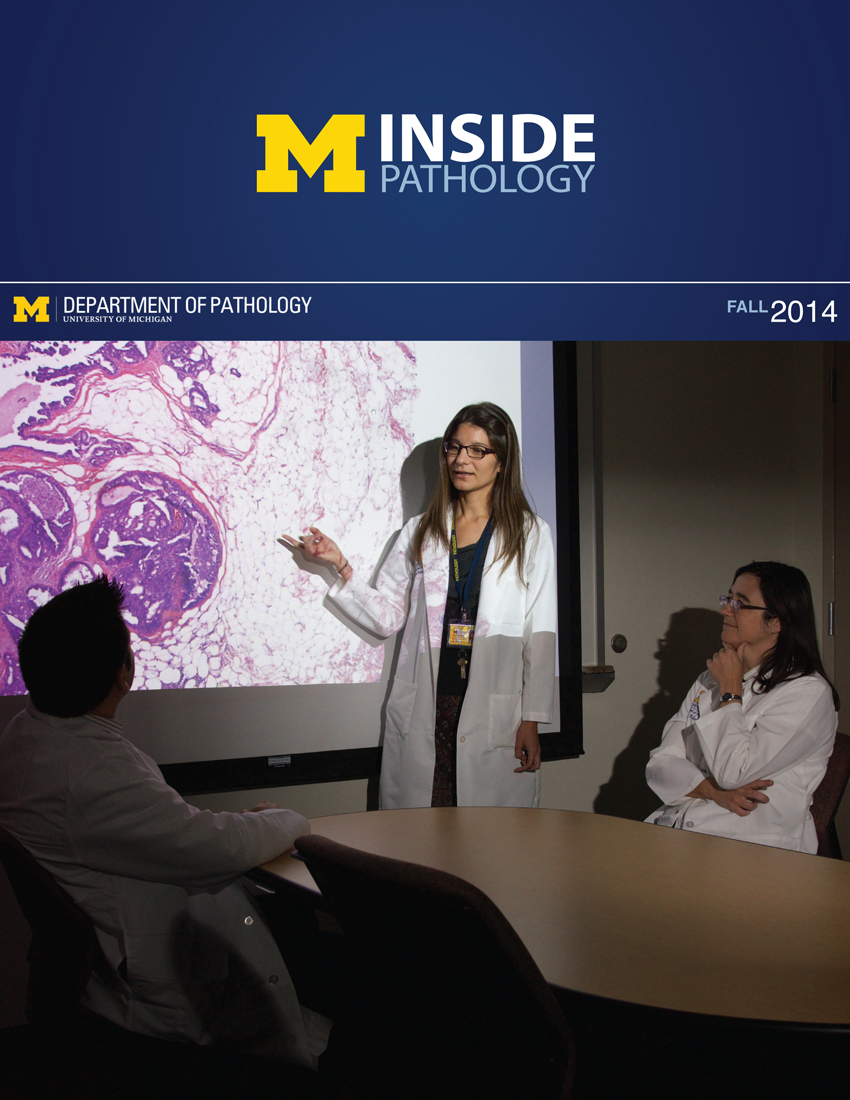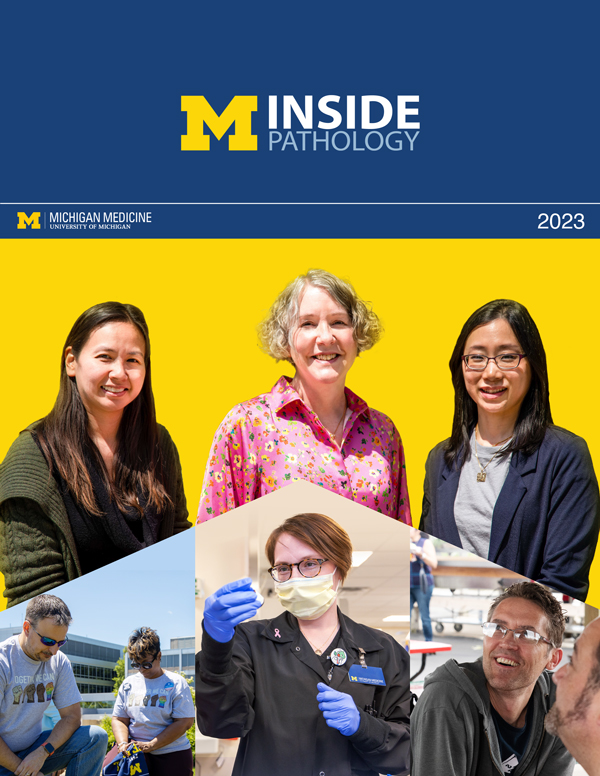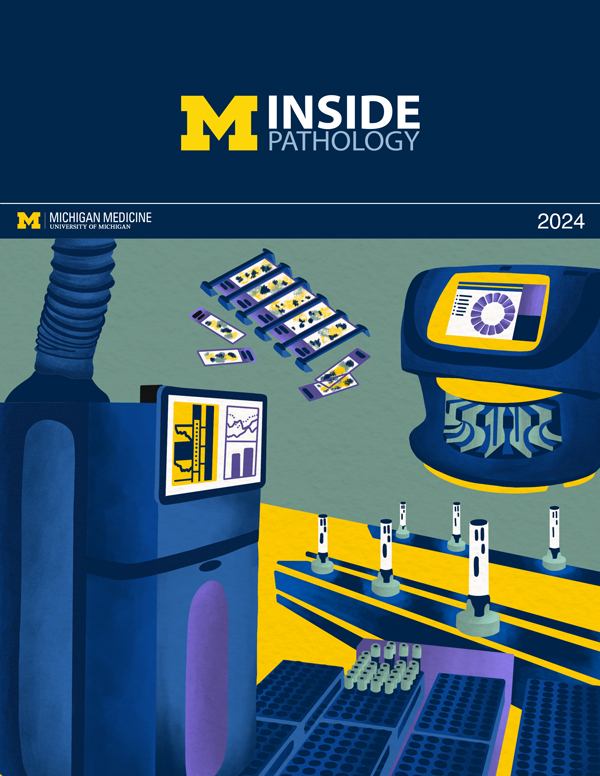Forensic Research Regarding COVID-19 Published
By Camren Clouthier | June 18 2020A new article from the Department of Pathology was recently published in Histopathology. The publication takes an in-depth examination of diffuse alveolar damage (DAD) caused by COVID-19 and how it is morphologically indistinguishable from other causes of DAD. The research, spearheaded by Drs. Jeffrey Myers and Kristine Konopka, also received contributions from faculty including Teresa Nguyen, MD, Jeffrey Jentzen, MD, PhD, Omar Rayes, MD, Carl Schmidt, MD, Allecia Wilson, MD, and Carol Farver, MD.
 Dr. Kristine Konopka discussed the study in more detail. "In this work, we assessed lung autopsy findings in hospitalized patients with known COVID-19 and individuals who died in the community without pre-mortem diagnoses of COVID-19 to understand the relative impact of medical intervention on lung histology."
Dr. Kristine Konopka discussed the study in more detail. "In this work, we assessed lung autopsy findings in hospitalized patients with known COVID-19 and individuals who died in the community without pre-mortem diagnoses of COVID-19 to understand the relative impact of medical intervention on lung histology."
Initially, diffuse alveolar damage was determined to be a ubiquitous finding in inpatient coronavirus disease 2019 (COVID-19)-related deaths, but recent reports also describe additional atypical findings, including vascular changes. Here, the team assessed lung autopsy findings in COVID-19 inpatients as well as untreated, severe acute respiratory syndrome coronavirus 2 (SARS-CoV-2)-positive individuals who died in the community. This experimentation was conducted in order to better understand the relative impact of medical intervention on lung histology. Additionally, experts investigated if COVID-19 represents a unique histologic variant of DAD by comparing the pathologic findings to uninfected control patients.
Data was collected after lung sections from autopsy cases were reviewed by three pulmonary pathologists, including two who were blinded to patient cohort. The cohorts included 4 COVID-19 inpatients, 4 cases with post-mortem SARS-CoV-2 diagnoses who died in the community, and 8 SARS-CoV-2-negative control cases. DAD was present in all but one SARS-CoV-2-positive patient who was asymptomatic and died in the community. Although SARS-CoV-2-positive patients were noted to have more focal perivascular inflammation/endothelialitis than control patients, there were no significant differences in the presence of hyaline membranes, fibrin thrombi, airspace organization, and "acute fibrinous and organizing pneumonia"-like intraalveolar fibrin deposition between the cohorts. Fibrinoid vessel wall necrosis, hemorrhage, and capillaritis were not features of COVID-19-related DAD.
Ultimately, the study suggests that DAD is the primary histologic manifestation of severe lung disease in COVID-19 patients who die both in the hospital and in the community, suggesting no contribution of hyperoxemic mechanical ventilation to the histologic changes. "To our knowledge, this series is the first blinded comparison of its kind and adds to the existing COVID-19 literature in showing no contribution of hyperoxemic lung injury to the histologic changes and finding no distinctive morphologic features to differentiate COVID-19-related DAD from DAD due to other causes."
Lastly, Dr. Konopka notes the exceptional hard work of colleagues at the Wayne and Washtenaw County Medical Examiner Offices. "[They] remain energetic for discovery while working in the very busy frontline of our department and without whom this project would not have been possible," she concludes.
 ON THE COVER
ON THE COVER
 ON THE COVER
ON THE COVER
 ON THE COVER
ON THE COVER
 ON THE COVER
ON THE COVER
 ON THE COVER
ON THE COVER
 ON THE COVER
ON THE COVER
 ON THE COVER
ON THE COVER
 ON THE COVER
ON THE COVER
 ON THE COVER
ON THE COVER
 ON THE COVER
ON THE COVER
